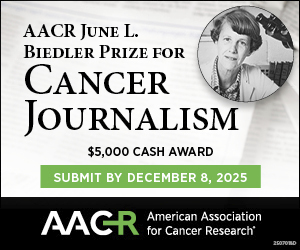By Sarah Zhang
The ScienceWriters2013 Awards Gala on Saturday night celebrated some of the finest science journalism of the past year. Winners represented the whole range of media, from book to blog to radio.
Science in Society Journalism Awards were given in five categories: book, science reporting, longform science reporting, science reporting for a local or regional market, and commentary and opinion.
In their acceptance speeches, writers told the story behind their stories. Doug Fox, who won for science reporting, spent four years on his piece, “Witness to an Antarctic Meltdown.” It was killed at its initial publication, which turned out to be a blessing in disguise. He reworked the piece, reported new sections, and made it all the better for its final publication in Scientific American.
Christie Aschwanden’s original pitch for a story on breast cancer screening and Susan G. Komen for the Cure was rejected by the New York Times. Instead, she wrote it for the blog Last Word on Nothing. That gave her the freedom to write exactly what she wanted, and her ultimately unedited piece won the award for commentary and opinion.
David Quammen won for his book Spillover: Animal Infections and the Next Human Pandemic, which the judges called a “brilliant and dazzling” look at animal diseases that have jumped to humans. Aside from the usual thanks, Quammen noted in his acceptance speech the importance of discussions from the plenary session, The XX Question, that preceded the awards ceremony. The panel on women in science writing was made into a plenary session after recent revelations about sexual harassment in the science writing community.
Other Science in Society Journalism Award winners included Hillary Rosner for “The Color of Bunny” in High Country News, and Patricia Callahan, Sam Roe, and Michael Hawthorne for a long-form investigative series in the Chicago Tribune on how lobbyists and doctors misled the public on flame retardants.
The Evert Clark/Seth Payne Award for young journalists was given to Megan Scudellari for four pieces published in MATTER, The Scientist, Discover, and DoubleXScience. Azeen Ghorayshi received an honorable mention for her piece “Sounding the Alarm” in the East Bay Express.
The Victor Cohn Prize for Excellence in Medical Science Reporting was jointly awarded to two long-time reporters. John Fauber of the Milwaukee Journal Sentinel won for his investigative series on conflicts of interest for doctors with ties with pharmaceutical companies. Joanne Silberner, a freelance multimedia journalist and former correspondent for NPR, won for her reporting including a series on cancer in the developing world. In their acceptance speeches, both winners cited Cohn’s long influence in medical reporting and encouraged the audience to pick up Cohn’s seminal book News and Numbers: A Writer’s Guide to Statistics.
The evening also included a tribute to Ben Patrusky, who was the executive director for the Council for the Advancement of Science Writing from 1988 until his retirement in September. The inaugural Patrusky Lecture at New Horizons in Science was given on Sunday by George Whitesides of Harvard University.


